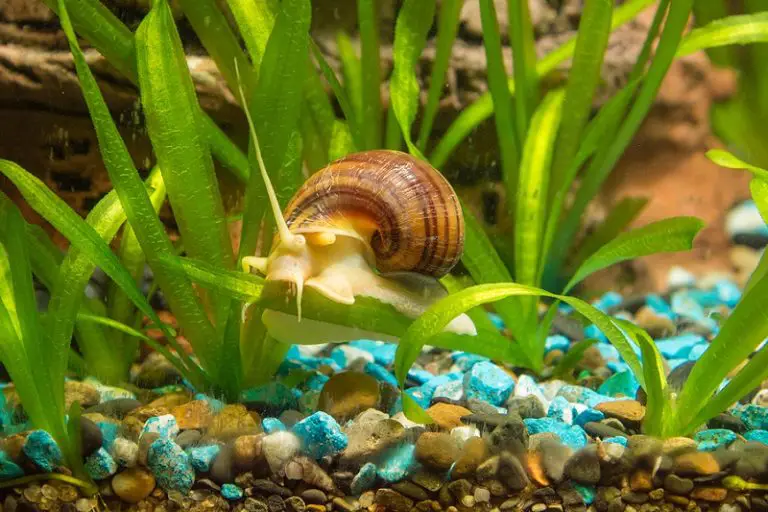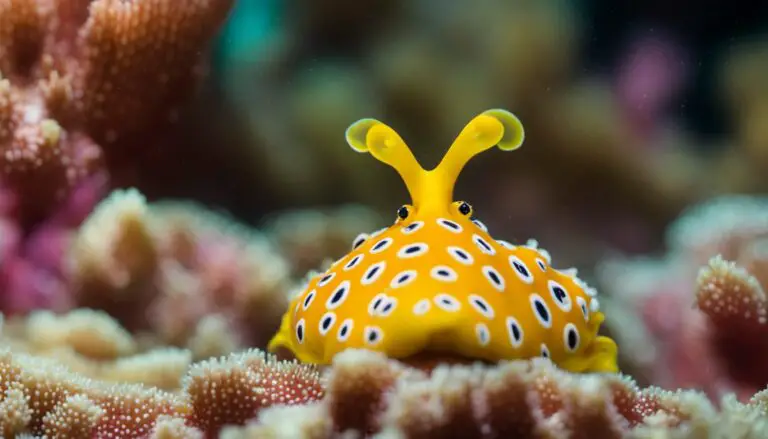Can Snails Hear?

Your curiosity about snails might have made you wonder, “Can Snails Hear?”. Even though snails are usually associated with their unique slow pace and slimy trails, their auditory capabilities are a lesser-known feature to explore. In this article, you will discover the truth about snail hearing and the reasons behind it.

Snails are gastropods, which is a type of mollusk. While many animals rely on ears for hearing, snails have a different approach to perceiving their environment. You might be surprised to learn that snails do not have ears; thus, they cannot hear in the conventional sense. However, that does not mean they are oblivious to their surroundings.
Instead of using ears, snails sense vibrations through their crawling surface, providing valuable information about their environment. This unique adaptation showcases the diverse ways living organisms have evolved to perceive the world around them. So, while snails may not be able to hear the way you do, they still possess a keen sense of their surroundings through their alternative methods of perception.
Contents
Table of Contents
An Overview of Snails

Snails belong to the class Gastropoda, a large group of invertebrates within the phylum Mollusca. As a member of the Mollusca family, snails are related to other gastropods, like slugs, and more distantly to other mollusks, like clams and octopuses. In this section, you will learn about the fascinating world of snails.
Being invertebrates, snails lack a backbone, which sets them apart from vertebrates like mammals, birds, and fish. Most are terrestrial, commonly known as land snails, inhabiting areas like gardens, woodlands, and other environments where they can find a steady supply of food, moisture, and shelter. However, aquatic snails can also be found in freshwater and marine ecosystems.
Among the numerous species of snails, one well-known example is the common garden snail, which you’ve probably encountered in your yard or at a park. Like all snails, garden snails possess a characteristic spiral shell that is their primary protection against predators and environmental hazards.
Another noteworthy species is the largest land snail, the Giant African Land Snail. This impressive gastropod can grow to a staggering 8 inches long, dwarfing most other land snails.
Snails exhibit remarkable adaptations and unique features that help them thrive in their habitats. Their muscular foot allows for slow but steady locomotion across various surfaces, while their tentacles contain sensory organs that aid in detecting their surrounding environment. For example, snails can hear through a specialized organ called the statocyst which detects pressure waves in the air and water.
In summary, snails are fascinating gastropods with a wide range of species that can be found in multiple ecosystems, from your backyard to the depths of the ocean. Their diverse adaptations and sensory abilities may be surprising, but they allow these remarkable invertebrates to navigate and thrive in a challenging world.
Understanding Snails’ Senses

As snails are fascinating creatures, you may be curious about their senses, such as hearing, touch, vision, and smell. Snails do not have external ears but possess a sensitive hearing organ called a statocyst near the base of their tentacles. This organ helps them detect sound waves and vibrations in the water, allowing them to avoid predators and locate mates.
In addition to their ability to hear, snails possess various other sensory abilities that help them navigate their environment and interact with other snails. For instance, their sense of touch is essential for sensing vibrations, whereas their sense of smell is achieved through olfactory organs on the lower tentacles. These organs help them detect chemicals in the environment and allow them to identify potential food sources or even fellow snails.
Your interest in snails may also extend to their vision. Snails’ eyes are positioned on their top tentacles, and they can see, albeit with limited clarity. They have additional light-sensing cells dispersed across their outer skin, which enables them to exhibit a shadow reflex – a protective reaction when a predator suddenly casts a shadow over them.
As for pain, there is still much debate among researchers about whether snails and other invertebrates can experience it. However, some studies suggest that snails might have a rudimentary way of experiencing discomfort, although the exact nature of their experience remains unclear.
Considering their feeding habits, you might be intrigued by the radula – a toothed, tongue-like structure snails use to scrape away food while eating. This might not be directly related to their senses, but it’s an essential part of their feeding system.
To sum up, snails possess a unique nervous system that supports their finely tuned senses of hearing, touch, vision, and smell. With our growing understanding of these amazing creatures, we continue to learn more about the complex and impressive world of snails.
The Perception of Sound in Snails

Despite lacking external ears, snails have a remarkable ability to perceive sound. They achieve this through a specialized sensory organ called the statocyst. Located on the snail’s body whorl near the base of their tentacles, the statocyst detects pressure waves in both air and water, enabling the snail to identify various sounds and vibrations.
When you think about the world of snails and their capacity to hear, you might initially assume that they rely solely on touch-based senses. However, the statocyst is fine-tuned to pick up sounds, including vibrations and waves of varying intensity. This allows snails to detect subtle environmental changes, navigate obstacles, and interact with their surroundings.
Although their hearing isn’t as advanced or sophisticated as that of mammals, their ability to pick up sound waves still plays an essential role in their survival. The information they gather from these auditory cues helps them avoid predators, find food, and locate potential mates.
In summary, snails have evolved a unique and effective mechanism for hearing without traditional ears. By leveraging their statocysts, they can perceive sound waves and vibrations in their environment, contributing to their ability to thrive and adapt to various situations. The study of snail hearing and how they detect vibrations and sounds with differing intensity is a fascinating area of research and provides insights into the varied adaptations found in the natural world.
Anatomy of a Snail

When observing a snail, you might notice its unique shell. The shell is composed mainly of calcium carbonate and is a protective layer for the snail’s delicate body. It might look like a simple structure on the outside, but a snail’s shell is an intricate part of its anatomy.
The snail’s body comprises several parts: a head, foot, mantle, and visceral hump. These various sections work together to help the snail navigate through its environment. One noteworthy aspect of snail anatomy is its tentacles. Snails have two pairs of tentacles situated on their heads. The upper pair houses their eyes, while the lower pair serves as olfactory organs to help them smell.
As you might imagine, snails have unique mouths compared to other creatures. Inside their mouths, they possess a structure called a radula. The radula comprises numerous microscopic teeth that help snails scrape and consume food. Additionally, they use their muscular foot to move around slowly but steadily.
Regarding respiration, most terrestrial snails have lungs to breathe, although some freshwater and marine species may have gills instead. Snails take in air through a small opening called a pneumostome, positioned on the right side of their bodies.
An interesting aspect of snail anatomy is their ability to hear without external ears. Snails rely on a specialized organ called a statocyst for hearing, located in their head near the base of their tentacles. The statocyst enables them to detect sound waves and vibrations in the water or air, assisting them in avoiding predators and finding potential mates.
So, now you better understand the key components of a snail’s anatomy. From their protective shells to their unique sensory organs, snails are fascinating creatures with intricately designed bodies to help them thrive in their environments.
Anatomy of a Snail:
Behavior and Habits of Snails
When understanding the behavior and habits of snails, it is essential to recognize that they are mostly nocturnal creatures. This means you will see them active at night, as they find it the most suitable time to search for food and mate.
Regarding their diet, snails are primarily herbivores, preferring to consume algae, leaves, and fruits. However, some species are omnivores and feed on small insects and other invertebrates. As you observe snails, you may also notice they are not the fastest creatures. Their speed is generally slow, covering only a few centimeters per minute.
As for snails’ hearing abilities, they do possess a sensory organ called a statocyst to detect pressure waves in the air and water. This organ is located on the right side of their head and helps them avoid predators and find mates.
In terms of mating behaviors, snails are unique in the animal kingdom. Some land snail species are hermaphroditic, which means they have both male and female reproductive organs. This allows them to reproduce both by mating with others and through self-fertilization.
It is also vital to note that snails tend to hibernate during colder months. Snails retreat into their shells when the temperature drops and seal the opening with a calcium-rich mucus called an epiphragm. This process helps them conserve energy and protect themselves from harsh weather conditions.
In conclusion, understanding the behavior and habits of snails is essential for appreciating their role in the ecosystem. By observing them at night, as they search for food and engage in unique mating behaviors, you can gain a deeper insight into these fascinating creatures.
Snails in Different Environments

Snails can be found in various environments, from gardens to aquariums and even in extreme conditions. In this section, you will learn about the different habitats that snails adapt to and how they survive in each environment.
You may come across land snails in your garden, which usually thrive in damp and shaded areas. These creatures help break down dead plant materials, essential for maintaining a balanced garden ecosystem. However, their hearing ability in such an environment differs from other species, as they rely on the sensitive statocyst for sensing vibrations.
On the other hand, aquariums tend to host marine snails, which are known to have a greater diversity and biomass than land snails. These snails are adapted to living in water and use their statocyst to detect sound waves and vibrations, assisting them in avoiding predators and finding mates. Understanding their environment and habitat requirements is crucial for maintaining their health when keeping them in aquariums.
Climate change is another factor that affects snail populations, as it alters their environments in various ways. For instance, rising temperatures or changing precipitation patterns could lead to dryer habitats, limiting food availability and suitable snail living conditions. As a result, these creatures may need to adapt and find new ways to survive in changing environments, further highlighting the importance of understanding their habitats and ecological roles.
In conclusion, snails are fascinating creatures found in a wide range of environments. Whether they reside in gardens, or aquariums, or face the challenges of climate change, they possess unique adaptations that help them thrive in their respective habitats.
Snails as Pets

Snails can make great pets for various reasons. They are low-maintenance, don’t need to be walked, don’t shed or smell, make no noise, and require minimal space. Watching them glide serenely in their terrarium can be rather relaxing and enjoyable.
A few important factors must be considered before keeping a snail as a pet. First, you should research the types of snails suitable for captivity. Some popular pet snails include Apple snails (Pomacea spp), Roman snails (Helix pomatia), and Banded snails (Cepaea spp). Each type has its unique requirements and characteristics.
A suitable snail habitat is essential for their well-being. This might include a well-ventilated terrarium with a secure lid, substrate for burrowing, and hiding spots. Furthermore, maintaining proper temperature and humidity levels is crucial to ensure your snail’s health.
Feeding your snails properly is also important. They generally eat various fruits, vegetables, and calcium-rich sources to maintain their shells’ integrity. Be cautious about pesticides in their food, as snails are sensitive to chemicals. Clean their habitat regularly to keep it hygienic and provide fresh food and water.
When it comes to handling your pet snails, exercise caution. Always wash your hands before and after handling to avoid the spread of germs. Gently pick up your snail with clean fingers or a soft object to minimize stress and damage to their delicate bodies. Avoid handling them too often or for extended periods; snails are best appreciated in their habitats.
Adhering to these guidelines will ensure your pet snails thrive in captivity and provide you with a unique, low-maintenance pet experience. Continually learn about their specific needs and adjust their care accordingly.
Snails and Human Interaction

Snails have played a significant role in human interactions in various parts of the world, specifically in Europe. One such example is escargot, a popular dish in France. Escargot is prepared using cooked land snails and typically served as an appetizer.
Although snails are often viewed as pests due to their impact on gardens and crop production, it’s crucial to note that they also have an intricate way of hearing and communicating despite not having external ears like humans. Snails possess a sensitive hearing organ called a statocyst in their head near the base of their tentacles. This statocyst allows them to detect sound waves and vibrations in the water, contributing to their survival by helping them avoid predators and locate mates.
While you may not immediately associate snails with communication, they interact with one another using their tentacles. Their second pair of tentacles below the eyes can leave behind chemicals for other snails, enabling them to communicate with each other without vocalization.
Be aware that the relationship between humans and snails is not always beneficial. Some snails carry parasites that can transmit harmful diseases to humans, such as Schistosomiasis, which affects over 240 million people worldwide. This parasitic disease is specifically transmitted through specific intermediate-host freshwater snails.
Overall, the interaction between snails and humans goes beyond just seeing them as pests or culinary delicacies. Understanding their complex biology, such as their unique ability to hear, and the potential risks some snails pose to humans is essential.
Snails in Research and Studies

Snails have been the subject of various research due to their unique sensory abilities. Although snails do not possess external ears, they are capable of hearing. Their hearing organ, called a statocyst, is located near the base of their tentacles, allowing them to detect sound waves and vibrations in water.
Researchers have been particularly interested in the role of snails as sentinel organisms for environmental monitoring. Characteristics of snails make them suitable for assessing the impact of pollutants on ecosystems. Consequently, recent studies have deployed snails as biomonitoring organisms to evaluate changes in environmental conditions over time.
You may have come across myths or vague claims about the abilities of snails. However, scientific research helps debunk these misconceptions and provides accurate information on these creatures. For instance, there was a common belief that snails couldn’t hear or had limited hearing abilities. Research has shown that snails can hear and use their statocyst to detect pressure waves in both air and water.
Additionally, studies have been conducted on the snail’s mouth and feeding habits. A team of researchers from Kiel University and the Center of Natural History discovered the function of each part of the snail’s mouth, contributing to understanding the snail’s adaptation to various food sources and habitats.
While exploring the topic of snails, it is crucial to rely on scientific research and information from reputable sources to prevent falling for myths or “woo,” which refers to beliefs based on vague, unscientific explanations. With accurate knowledge, you can confidently participate in discussions about snails and their unique capabilities.
Snails’ Diet and Predators

As you explore the world of snails, you’ll find that their diet varies depending on the species. Many snails are herbivores, feeding on various plants, including leaves, stems, and fruits. They are essential in breaking down organic matter and helping plants decompose. On the other hand, some snails are carnivorous, like the species of the Powelliphanta, which live in New Zealand and primarily feed on other gastropod mollusks such as slugs and earthworms, among other terrestrial animals.
Understanding the eating habits of snails would be incomplete without looking at their predators. Snails face numerous threats from animals, including beetles, shrews, fish, snakes, birds, crabs, and rats (Source). Typically, retreating into their shell cannot solely protect snails from predators, as they can still be crushed or swallowed whole.
Snails have developed different defense mechanisms to withstand predation, such as secreting extra mucus when attacked, which may confuse or stifle the attacker. Additionally, some snails hide beneath the ground, disappearing from their predator’s sight.
To fully comprehend snails’ diet and predators, it’s important to consider the variety of snail species and their unique adaptations in response to their environment. This understanding highlights snails’ key role in the natural ecosystem and their ever-evolving relationship with their predators.
Miscellaneous Facts about Snails

In your article about whether snails can be heard, adding a section covering other interesting facts about these fascinating creatures is a great idea. So here are some miscellaneous facts about snails that you might find interesting.
Snails, known for their slow pace, have many teeth. Did you know that common garden snails can have up to 14,175 teeth on their tongue? They use these teeth to tear apart their food.
Another intriguing fact about snails is that they don’t possess a backbone. As invertebrates, they rely on their hard shells for support and protection. An interesting fact about a snail’s shell is that its size can reflect the age of the snail.
Regarding communication, snails do not chatter or make any audible sound we can perceive. Instead, scientists believe snails communicate through the slime they leave behind and by utilizing physical touch.
Regarding their sense of direction, snails rely on their sense of touch and ability to detect chemicals around them through their tentacles. Moreover, given their lack of backbone, they can regrow these tentacles if they suffer damage.
Though it might be hard to imagine, snails do have a form of emotion. The stress they experience can be observed by releasing specific stress hormones in their bodies. Snails exhibit various behaviors and responses to different environmental stimuli like other creatures.
Finally, it’s important to remember that snails come in various shapes and sizes. With over 60,000 species known to exist, there is a wide variety for you to explore and learn more about.
Frequently Asked Questions: Can Snails Hear
Do snails detect vibrations?
Yes, snails are capable of detecting vibrations. While they do not have ears like other animals, snails can sense vibrations in their environment, which helps them navigate and react to their surroundings.
How do snails sense their environment?
Snails use a combination of their senses to perceive and interact with the world around them. Their tentacles are a significant part of their sensory perception. They have two pairs of tentacles, with the longer pair used for detecting changes in light, while the shorter pair is used for feeling their surroundings and detecting smells.
What senses do snails possess?
Snails possess multiple senses, including touch, taste, and light detection. Although they don’t have ears, they can still detect vibrations, contributing to their auditory sense. Furthermore, they rely on their tentacles to gather information about their environment, such as detecting smells and feeling the texture of surfaces.
Do snails have any auditory abilities?
As mentioned earlier, snails cannot hear in the traditional sense due to their lack of ears. However, they can detect vibrations and sense sound waves through their bodies, allowing them to react and adapt to environmental changes.
How do snails communicate?
Snails communicate primarily through the release of chemical compounds called pheromones. These pheromones help transmit information about their location, reproductive readiness, and other essential messages. Snails may also communicate through touch as they interact with their surroundings and other snails.
What is the role of tentacles in snail sensing?
Tentacles are vital to a snail’s ability to sense its environment. As mentioned earlier, the longer pair of tentacles detects changes in light, while the shorter pair is responsible for feeling their surroundings and detecting smells. Together, these tentacles provide snails with essential information about their environment, allowing them to make informed decisions about their movement and actions.

![What Do Apple Snails Eat? [Full Guide]](https://allourcreatures.com/wp-content/uploads/2021/10/what-do-apple-snails-eat-768x512.jpg)




